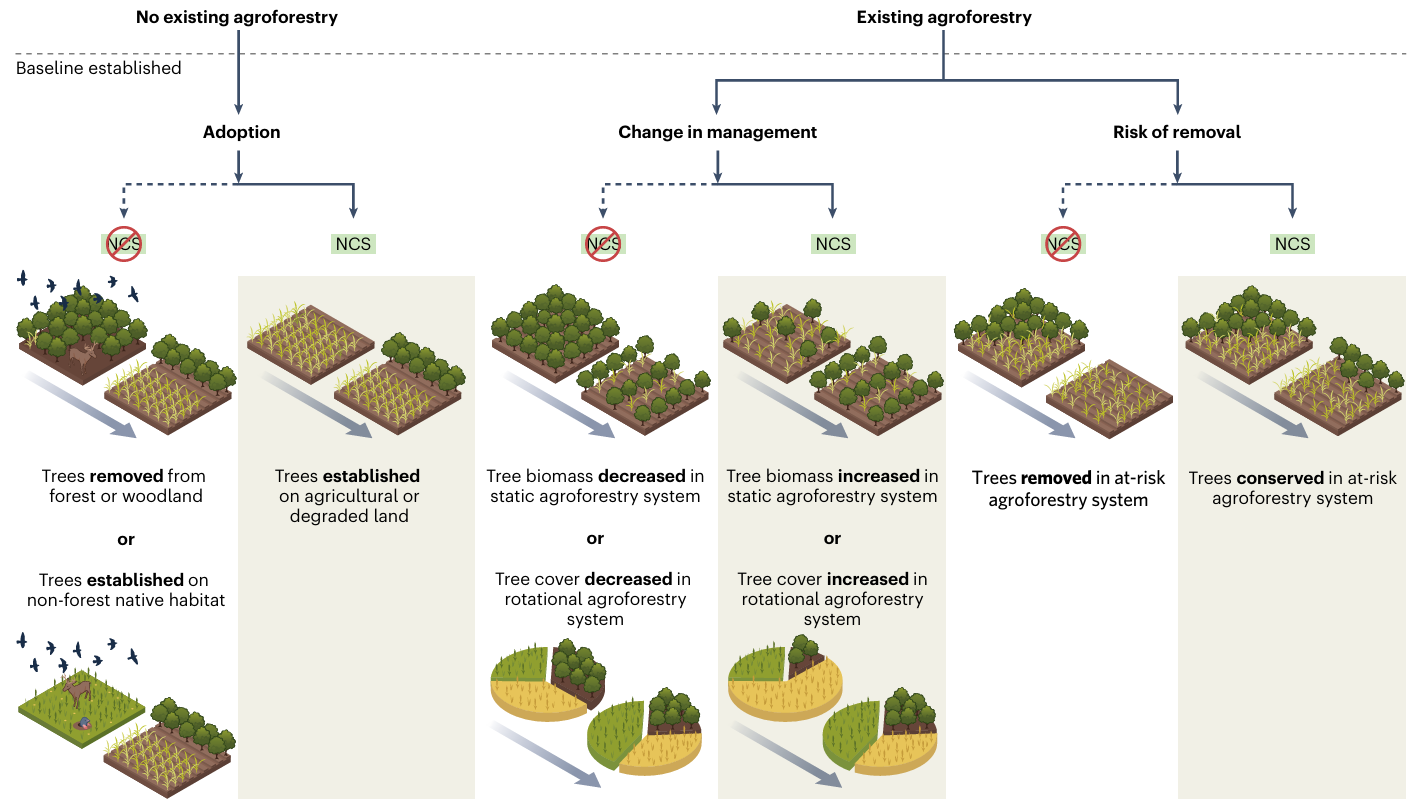28 September, 2023 | nature climate change | Source |
Introduction: Agroforestry presents significant potential for sequestering up to 0.31 Peta gram of carbon (Pg C) annually— comparable to major solutions like reforestation. Yet, uncertainty persists regarding precise mitigation capabilities and practical monitoring of agroforestry systems. To address these gaps, an international research consortium led by The Nature Conservancy outlines agroforestry as an effective natural climate solution (AF-NCS). Utilizing high-resolution remote sensing and comprehensive carbon data synthesis, their approach seeks to refine understanding and enhance monitoring precision.
Key findings: The study identifies agroforestry’s multifunctionality—providing agricultural, economic, and environmental benefits—while emphasizing its role in climate mitigation through carbon sequestration. Current global agroforestry practices already contain substantial woody carbon (ranging from 6.93 to 37.12 Pg C). However, precise estimates are challenging due to diverse management practices and measurement methodologies, which significantly vary in accuracy and scope. The researchers advocate for standardized, improved data collection techniques and advanced remote sensing methodologies to better quantify agroforestry’s true potential and facilitate accurate global monitoring.
The study also emphasizes that agroforestry adoption faces barriers including complex management practices, economic feasibility, and inadequate policy support. Regions with high agroforestry potential, notably in the Global North, are often overlooked in climate mitigation strategies. The authors call for targeted research and increased awareness to lower adoption barriers and integrate agroforestry more comprehensively into climate policies and incentive mechanisms, such as carbon markets and national environmental strategies. Future research should prioritize enhancing monitoring accuracy, exploring socio-economic impacts, and developing region-specific incentives to scale up agroforestry implementation.

Figure | Land-use change and carbon outcomes determine whether agroforestry is an NCS. If agroforestry does not exist before the baseline, then agroforestry adoption serves as an NCS when it increases woody and soil carbon storage without impacting biodiversity (left). If agroforestry exists at the time of baseline establishment, changing agroforestry management can serve as an NCS if it increases tree biomass or proportional tree cover in static or rotational agroforestry systems, thus increasing carbon storage (middle). Alternatively, conservation of some or all trees can serve as an NCS if those trees would have been removed under business-as-usual conditions, such that their maintenance leads to avoided emissions (right). Figure adapted from image by Vin Reed.




